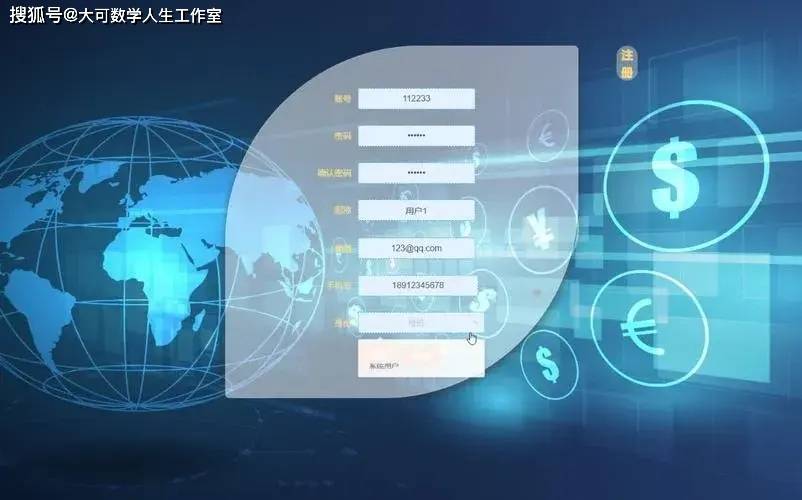 Technology peripherals
Technology peripherals
 AI
AI
 Fermat's Little Theorem to study the security issues of blockchain and metaverse smart contracts
Fermat's Little Theorem to study the security issues of blockchain and metaverse smart contracts
Fermat's Little Theorem to study the security issues of blockchain and metaverse smart contracts
In the blockchain and metaverse, the security of smart contracts is very critical, and Fermat’s Little Theorem can play an important role in this regard. The following are some possible questions and research directions:

Exploiting vulnerabilities in smart contracts is a research field where researchers are committed to using mathematical tools, such as Fermat’s Little Theorem, to discover and exploit vulnerabilities in smart contracts to conduct attacks or malicious activities. This process requires in-depth analysis and reverse engineering of the contract code and a deep understanding of blockchain security protocols.
Secure Coding Practice aims to study how to use Fermat’s Little Theorem to write more secure smart contract code. This process involves optimizing contract logic and preventing possible exceptions and loopholes. In addition, there is a need to study how to test and verify the security of smart contracts to ensure that potential issues can be discovered and fixed before actual deployment. By applying the principles and methods of Fermat's Little Theorem, we can improve the security of smart contracts and reduce the risk of being attacked. Therefore, in-depth study and application of Fermat’s Little Theorem are important steps in writing more secure smart contract code.
For the reliability analysis of smart contracts, we can consider using Fermat's Little Theorem. This means we can check data integrity and consistency during contract execution and detect possible logic errors or anomalous behavior. In addition, we also need to conduct stress testing and performance evaluation to ensure the stability and reliability of the contract under high load and abnormal conditions.

Optimizing and improving encryption algorithms is an important research task. We can focus on how to improve the performance and security of encryption algorithms based on Fermat's Little Theorem for application in smart contracts. In order to achieve this goal, we need to delve into the algorithm itself and have a deep understanding of the application scenarios of encryption algorithms in smart contracts. Through such work, we can improve the security of smart contracts and improve their performance.
In the metaverse, secure communication and interoperability between different blockchain networks are very important. In order to ensure the secure transmission and trusted exchange of data, researchers are exploring how to design a secure cross-chain communication protocol using Fermat's Little Theorem and other encryption algorithms. This protocol will make full use of the characteristics of Fermat's Little Theorem and other encryption algorithms to ensure data security and reliability during the communication process. Through this protocol, different blockchain networks will be able to communicate and exchange data securely, allowing for more efficient cross-chain operations.

Privacy protection and data security: In the blockchain and metaverse, user privacy and data security are important concerns. Research how to use Fermat's Little Theorem and other encryption technologies to achieve privacy protection and data security, such as protecting user data and transaction information through encryption technology to prevent access or abuse by unauthorized third parties.
With the rapid development of blockchain and the Metaverse, corresponding compliance and regulatory issues have gradually surfaced. We need to examine how Fermat’s Little Theorem and other cryptographic techniques can be used to meet compliance requirements, including compliance with data protection and privacy regulations, while ensuring that smart contracts are legal and regulatory. This means that we need to find a way to ensure the security and privacy protection of user data through encryption technology, while ensuring the legality and regulatoryability of smart contracts to meet relevant compliance requirements.

By conducting in-depth research on these issues, we can improve the security of smart contracts in the blockchain and metaverse, protect users’ rights and data security, and promote the healthy development of blockchain and metaverse technologies.
Using Fermat's Little Theorem for formal verification is a method to ensure the logical correctness and security of smart contracts. This approach requires in-depth study of mathematical logic and formal methods, as well as accurate modeling of smart contract behavior. By performing formal verification, we can discover and prevent potential vulnerabilities and errors, thereby improving the reliability and security of smart contracts.

Research on provable security: Research on how to use Fermat’s Little Theorem and other cryptographic techniques to provide provable security for smart contracts. This means mathematically proving the security of smart contracts in the face of various attacks, thereby providing strong security guarantees for contracts. This requires a deep understanding of cryptography and formal methods, as well as a comprehensive analysis of smart contract security.
Adversarial smart contract analysis aims to study how to detect and defend against adversarial attacks against smart contracts. This research requires in-depth analysis and understanding of smart contracts, as well as an in-depth study of the strategies and means that attackers may adopt. By analyzing adversarial attacks, we can discover potential security risks and vulnerabilities and take corresponding defensive measures to protect the security of smart contracts.

Fermat’s Little Theorem is an important concept with broad application prospects in the security research of blockchain and metaverse smart contracts. By in-depth research and exploration of this theorem, we can continuously improve the security and reliability of smart contracts, thereby promoting the healthy development of blockchain and metaverse technology. To achieve this goal, interdisciplinary collaboration and in-depth theoretical research are required, covering areas such as cryptography, mathematics, computer science and law. Only through this kind of comprehensive research and cooperation can we better understand and apply Fermat’s Little Theorem and provide solutions to the security issues of the blockchain and metaverse.
"Sea and Sky One Color" is a beautiful scene, which shows the vastness of the ocean and sky. The painting blends the colors of the ocean and sky to create a heavenly scene. In this scenery, we can see the blue water and the blue sky blending into each other, as if it were a work carefully sketched by a painter. Whether it is day or night, the sea and sky are so charming and refreshing. Whether you are in it or looking from a distance, you can feel the magnificence and tranquility of nature. The sea and sky are the same color, so beautiful.
The above is the detailed content of Fermat's Little Theorem to study the security issues of blockchain and metaverse smart contracts. For more information, please follow other related articles on the PHP Chinese website!

Hot AI Tools

Undresser.AI Undress
AI-powered app for creating realistic nude photos

AI Clothes Remover
Online AI tool for removing clothes from photos.

Undress AI Tool
Undress images for free

Clothoff.io
AI clothes remover

AI Hentai Generator
Generate AI Hentai for free.

Hot Article

Hot Tools

Notepad++7.3.1
Easy-to-use and free code editor

SublimeText3 Chinese version
Chinese version, very easy to use

Zend Studio 13.0.1
Powerful PHP integrated development environment

Dreamweaver CS6
Visual web development tools

SublimeText3 Mac version
God-level code editing software (SublimeText3)

Hot Topics
 I Tried Vibe Coding with Cursor AI and It's Amazing!
Mar 20, 2025 pm 03:34 PM
I Tried Vibe Coding with Cursor AI and It's Amazing!
Mar 20, 2025 pm 03:34 PM
Vibe coding is reshaping the world of software development by letting us create applications using natural language instead of endless lines of code. Inspired by visionaries like Andrej Karpathy, this innovative approach lets dev
 How to Use DALL-E 3: Tips, Examples, and Features
Mar 09, 2025 pm 01:00 PM
How to Use DALL-E 3: Tips, Examples, and Features
Mar 09, 2025 pm 01:00 PM
DALL-E 3: A Generative AI Image Creation Tool Generative AI is revolutionizing content creation, and DALL-E 3, OpenAI's latest image generation model, is at the forefront. Released in October 2023, it builds upon its predecessors, DALL-E and DALL-E 2
 How to Use YOLO v12 for Object Detection?
Mar 22, 2025 am 11:07 AM
How to Use YOLO v12 for Object Detection?
Mar 22, 2025 am 11:07 AM
YOLO (You Only Look Once) has been a leading real-time object detection framework, with each iteration improving upon the previous versions. The latest version YOLO v12 introduces advancements that significantly enhance accuracy
 Top 5 GenAI Launches of February 2025: GPT-4.5, Grok-3 & More!
Mar 22, 2025 am 10:58 AM
Top 5 GenAI Launches of February 2025: GPT-4.5, Grok-3 & More!
Mar 22, 2025 am 10:58 AM
February 2025 has been yet another game-changing month for generative AI, bringing us some of the most anticipated model upgrades and groundbreaking new features. From xAI’s Grok 3 and Anthropic’s Claude 3.7 Sonnet, to OpenAI’s G
 Elon Musk & Sam Altman Clash over $500 Billion Stargate Project
Mar 08, 2025 am 11:15 AM
Elon Musk & Sam Altman Clash over $500 Billion Stargate Project
Mar 08, 2025 am 11:15 AM
The $500 billion Stargate AI project, backed by tech giants like OpenAI, SoftBank, Oracle, and Nvidia, and supported by the U.S. government, aims to solidify American AI leadership. This ambitious undertaking promises a future shaped by AI advanceme
 Sora vs Veo 2: Which One Creates More Realistic Videos?
Mar 10, 2025 pm 12:22 PM
Sora vs Veo 2: Which One Creates More Realistic Videos?
Mar 10, 2025 pm 12:22 PM
Google's Veo 2 and OpenAI's Sora: Which AI video generator reigns supreme? Both platforms generate impressive AI videos, but their strengths lie in different areas. This comparison, using various prompts, reveals which tool best suits your needs. T
 Google's GenCast: Weather Forecasting With GenCast Mini Demo
Mar 16, 2025 pm 01:46 PM
Google's GenCast: Weather Forecasting With GenCast Mini Demo
Mar 16, 2025 pm 01:46 PM
Google DeepMind's GenCast: A Revolutionary AI for Weather Forecasting Weather forecasting has undergone a dramatic transformation, moving from rudimentary observations to sophisticated AI-powered predictions. Google DeepMind's GenCast, a groundbreak
 Which AI is better than ChatGPT?
Mar 18, 2025 pm 06:05 PM
Which AI is better than ChatGPT?
Mar 18, 2025 pm 06:05 PM
The article discusses AI models surpassing ChatGPT, like LaMDA, LLaMA, and Grok, highlighting their advantages in accuracy, understanding, and industry impact.(159 characters)





